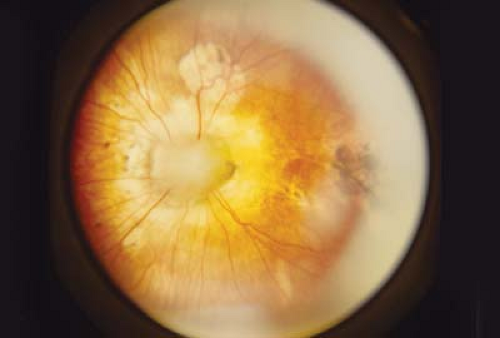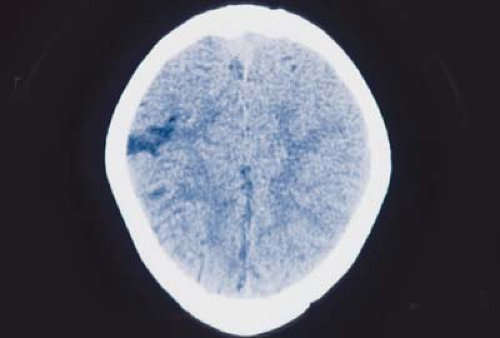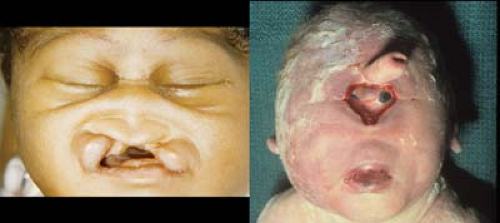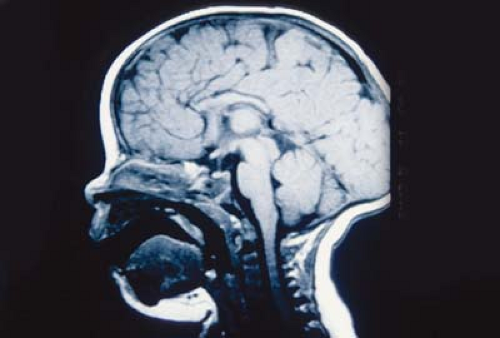Neurologic
Alex V. Levin
Thomas W. Wilson
J. Raymond Buncic
During embryogenesis, the brain and many ocular structures are derived from neuroectoderm. Therefore, many structural abnormalities of the brain will be associated with ocular anomalies. Optic nerve hypoplasia is associated with anterior pituitary abnormalities, agenesis of the corpus callosum, absence of the septum pellucidum, and schizencephaly.
Morning glory disc can be associated with basal encephalocele, and tilted disc syndrome can be associated with suprasellar tumors.
Nystagmus and abnormalities of extraocular eye movements are commonly external signs of neurologic abnormalities. Infants with constant exotropia will often have developmental delay. Specific nystagmus patterns can help localize structural pathology (downbeat nystagmus—Arnold Chiari malformation). Myasthenia gravis, multiple sclerosis, mitochondrial diseases, and storage disease will often present with ocular/visual abnormalities prior to systemic symptoms.
Increased intracranial pressure from brain tumors or pseudotumor cerebri can present as vision loss and examination of the optic disc reveals papilledema. Headaches are a common reason for referral to an ophthalmologist. The cause of headache is rarely secondary to strabismus or refractive error. However, careful neuro-ophthalmic examination, including evaluation of the visual acuity, visual fields, color vision, pupils, and extraocular movement as well as visualization of the optic disc, is required to exclude any underlying pathology.
 Figure 21.5 Aicardi Syndrome—Ocular Findings Characteristic ocular findings of Aicardi syndrome include well-circumscribed lacunae in the retina. Histopathologically, these lesions represent defects in the chorioretina, including the retinal pigment epithelium, to variable depths. Patients may also have optic disc colobomas or other less specific optic disc anomalies. The retinal lacunae are multiple and are concentrated about the optic disc. These lesions are classic for Aicardi syndrome. Patients may also have abnormalities of the vertebrae. The disease is lethal in males. A careful family history, including a history of multiple miscarriages during pregnancy, should be obtained in cases where Aicardi syndrome is suspected.
Stay updated, free articles. Join our Telegram channel
Full access? Get Clinical Tree
 Get Clinical Tree app for offline access
Get Clinical Tree app for offline access

|



